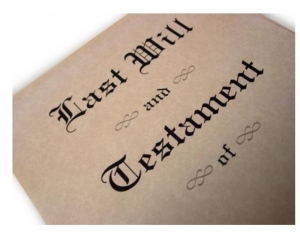Probate vs. Nonprobate Property in Your Estate – Your Will is Not the Only Way
So you have finally wrapped your head around the fact that you need to create an estate plan in order to determine to whom and in what amounts your property will pass upon your death. Estate planning attorneys realize that it is difficult to think about one’s own mortality, and getting clients to this point is half the battle. What you will want to consider as you go through this process is that your estate planning documents may not control the distribution of your entire estate. The distributions of some types of assets, categorized as nonprobate assets, are controlled by operation of law instead of the estate planning documents. While the creation of wills, trusts, and other estate planning documents is a crucial part of the estate planning process, it is equally important to understand how your nonprobate property will be distributed upon your death and, if necessary, coordinate the passage of the nonprobate property with your estate plan.
For estate planning and estate administration purposes, there are two broad categories of property: probate and nonprobate. Probate property is the property a person owns in his or her individual name that does not include a beneficiary designation. Common examples of probate property include individual bank accounts, vehicles, individually-owned real estate, and tangible personal property. An interest in jointly-owned property that is owned as tenants-in-common is also considered probate property because the individual’s interest in this property is severable from the other joint interests.
In contrast, nonprobate property is made up of two main types. The first type of nonprobate property is the property that a person owns as an individual but for which the person named beneficiaries by completing a beneficiary designation form provided by the financial institution holding the funds. This type of nonprobate property typically includes retirement accounts (401(k)s, 403(b)s, IRAs, etc.), life insurance, and financial accounts with a “payable on death” (POD) or “in trust for” (ITF) designation. The second type of nonprobate property is property that a person owns jointly with other individuals that is designated as being owned as tenants by the entireties (if the co-owners are a married couple) or jointly with the right of survivorship. Jointly-owned property may include real estate or financial accounts; in fact, Pennsylvania law provides that a jointly owned financial account is automatically considered to be owned jointly with the right of survivorship unless there is clear and convincing evidence that the co-owners intended for the account to be owned as tenants-in-common.
Most estates are a combination of probate and nonprobate property; however, recent trends show that nonprobate assets comprise a larger portion of an individual’s estate than in the past. This trend is important to note in an estate planning and estate administration context because nonprobate assets will be distributed by operation of law to the named beneficiaries under the beneficiary designations or the surviving joint owner, not to the beneficiaries named under the decedent’s estate planning documents. For this reason, it is important not only to know which assets are nonprobate at the time the estate plan is created, but also to update beneficiary designations (or even reconsider the titling of joint assets) after the estate planning documents are executed. Updating beneficiary designations is particularly important for older nonprobate assets, such as a 401(k) from a first job, that have beneficiary designations that were completed many years ago and may no longer reflect your life circumstances, let alone your estate plan.
A few examples illustrate these points. As a first example, suppose that a husband and wife execute Wills that leave all assets to the surviving spouse upon the first spouse’s passing. However, the husband has a large 401(k) through his employer, and he completed the beneficiary designation many years ago naming his mother as the beneficiary, as he was not married at the time. If the husband dies without updating his 401(k) beneficiary designation, that asset will pass to his mother instead of his wife. In a second example, suppose that a parent has three college-age children, and has created trusts under his Will to hold assets for his children until they reach age 40; however, the parent named his children outright as the beneficiaries of his life insurance. Without changing the beneficiary designation to name the trusts for his children, the life insurance will be payable directly to the children upon the parent’s death. Finally, consider the example of a mother who has an adult daughter and an adult son and executes a Will leaving her estate equally to the children. The mother also owns a house, but she retitles the house from her individual name to joint with right of survivorship ownership with her daughter. Upon the mother’s death, the daughter will be the sole owner of the house, while the son will not have any beneficial interest in the house.
While updating beneficiary designations after executing estate planning documents may seem like just another step, it is a crucial part of the estate planning process to ensure the you have coordinated the distribution of nonprobate assets with the distribution of the probate assets controlled by the estate planning documents, and that your overall strategy reflects your intentions. Working with an experienced estate planning attorney is real benefit as you go through this important process.





















